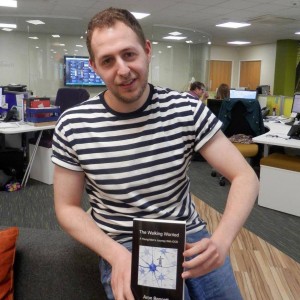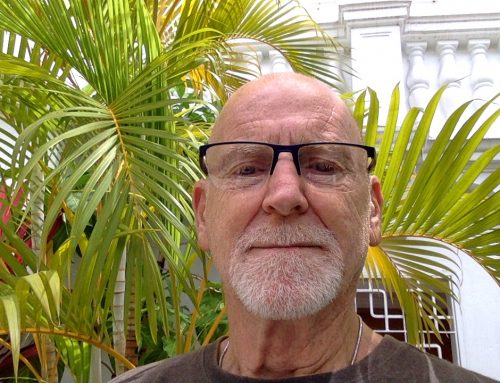The other week, I ‘perved’ on a teenage girl in a displacement camp. The sixteen or seventeen year-old from Nuba in South Sudan, now languishing uneasily in the nearby town of Kodok and being filmed by a team of BBC cameramen, was wearing a thread-bare, semi-transparent whisper white tobe (as is traditional in the region), and I had bought it upon myself to take a fleeting look directly at her breasts. The incident had, at once, caused me untold distress. Enough in fact to cause a whole night of discombobulated sleep. Though a week or so later and I had actually found myself doing the self same thing all over again, this time to a whole group of women alighting an old German freight train – Deutsche Reichsbahn “Güterwagen”- in Auschwitz. I had been watching a remake of the Eichmann Show with my parents, and, as the scene switched to real life footage of women climbing down from open-topped wagons fit only for livestock, I couldn’t resist the urge to take the briefest of glances at the odd dangling or extruding leg and thigh.
The wallop of pure unadulterated anxiety (not to mention guilt) which followed on that latter occasion had been almost enough to finish me off. Had I looked on purpose? Was I ‘ogling’ these poor, destitute women of unspeakable futurity? Were my motives sexual? Or was all this simply just OCD…
For me, purity in all matters moral (and, by extension, sexual) has been, over the years, not only important but essential. So too has the certainty that I am always a good person. It is a manifestation of OCD – sometimes referred to as ‘moral scrupulosity’- that means I am unable under any circumstances to fall short of this near-unreachable ethical golden standard. Looking inappropriately at women in the throes of suffering was clearly an example of doing something bad. I was a bad person. I didn’t deserve to be happy.
Of course, I am half-certain now – a few weeks later – that I probably had not done anything untoward whilst watching the various incidents of female suffering splattered across the 42″ monitor of my newest SONY TV. My looking is never so much a purposeful execution, more a result of my brain shouting rather piercingly: ‘DO NOT LOOK. FOR GOODNESS, DO NOT LOOK’ which, a bit like asking someone not to think of a pink elephant, immediately consummates the urge regardless of one’s higher motives. Though I can never be one hundred per cent sure of this analysis/justification and am therefore often unwilling to let myself ‘off the hook’.
It hasn’t of course helped over the years that my memory is pretty darn unreliable, specious even. Often once I have convinced myself at an emotional level of my having done something ‘bad’, I find it much harder to make the charges stick rationally. The finer details – often salient facts – are invariably misremembered or even missing from the picture entirely. From the young Sudanese girl trekking the mountains of South Kordofan to the women in Auschwitz, Bergen-Belsen and Treblinka departing steam trains destined for what can only be described as ‘hell on earth’; I have no idea how I looked, why I looked or, even, quite crucially, if I looked at all.
*
As you can probably deduct from the implicit complexity and intensity inherent in my revelations, my interminable doubt and colossal guilt are not a new thing for me. In fact they have been a feature of my life now since my university years just over a decade ago. The symptoms had no doubt been ‘triggered’ by my departure – the stark change in environment creating a glut of anxiety just crying out for assuagement in the form of an errant control mechanism- and have remained present on and off ever since (although I am better now than I ever was – much more skilled in ‘managing’ my symptoms).
Much harder has been ascertaining the causes of OCD which, together with the specific manifestations, are perhaps a lot more difficult to dissect. Why some people wash whilst others check or ruminate, has not been answered by brain science. And yet, despite our lack of knowledge, despite not understanding fully the role of SSRI’s, the function of the Anterior Cingulate Cortex or the effects of Eastern-derived treatments such as Mindfulness, it is certainly not all doom and gloom. Effective and empirically proven treatments such as Exposure & Response Prevention (the version of CBT utilised in treating OCD) are helping millions of people every single day. More importantly, is the enlivening prospect that more and more psychologists and psychotherapists actually serious about the treatment of OCD are beginning to understand the condition very well indeed.
And that’s because, despite what you might think about OCD, it is actually VERY easy to get your head around.
Perhaps one of the best bits of news I can proffer regarding the experience of OCD is that, despite the various alternative manifestations – cleaning, checking, getting check-ups for STI’s or simply just neutralising blasphemous thoughts – OCD is nearly always the same. It follows the same patterns. And just like a Sudoku puzzle, once you become practiced enough at doing them, there is no level of difficulty, no level of involvedness that can stump, baffle or confuse you.
However, for this enlightened message to truly come across, it is vital that stories that are less ‘common’ are always thrown into the Canon of our understanding. That atypical symptoms subscribing to similar patterns get the same level of attention. One of the best articles I have ever read on OCD is an article called ‘Here’s Looking at You, Kid: People with OCD who notice things too much’ by Fred Penzel, Ph.D. In it, Penzel contends, by highlighting the example of a female patient who cannot stop looking at the genitalia of her friends and colleagues, that OCD occurs “in a great variety of forms” and that this can lead to a an even greater number of sufferers not receiving “proper diagnosis of treatments”. This Penzel blames squarely on the symptoms “not fitting the usual stereotypes associated with OCD” and the lack of information available on such symptoms.
Often over years I have found it hard, almost impossible at times, to shake the feeling that my looking was not because I was a raging pervert; a bon vivant, a libertine, a lecher. Although my own understanding of OCD has always been fairly robust, in the absence of adequate information and professional advice (not to mention frequent and powerful twangs of self-reproach that crashed against me like waves against the seashore) I had found it difficult to convince myself of the rather more rational premise that my looking problems really were just symptoms of OCD.
In times of doubt, it is important to remember that OCD, despite having many different faces, is nearly always the same. You’ve all heard the phrase; “If it feels like OCD, then it probably is”. As I have said before, the technical manifestations of OCD may differ but the fundamentals are, as it were, immutable. It is a lesson that I try not to forget.
It is a lesson that I hope you too dear reader will not forget either.
* * *
 Born in 1986, Aron Bennett from Essex has lived with OCD for a number of years. Following a second spell during his university years in 2004, Aron decided to write a full-blown memoire about his rather heteroclite experiences in a bid both to make sense as well as to end some of the ‘generational shame’ that still encircles this disorder. A graduate Law student from Lancaster University, Aron currently lives in Norwich where, outside of office hours, he works as a regional volunteer for the UK-based charity, OCD Action.
Born in 1986, Aron Bennett from Essex has lived with OCD for a number of years. Following a second spell during his university years in 2004, Aron decided to write a full-blown memoire about his rather heteroclite experiences in a bid both to make sense as well as to end some of the ‘generational shame’ that still encircles this disorder. A graduate Law student from Lancaster University, Aron currently lives in Norwich where, outside of office hours, he works as a regional volunteer for the UK-based charity, OCD Action.
Aron can be found on Amazon, Facebook and Twitter
If you enjoyed this post, please take a few moments to leave a comment or to share with your friends using those little share buttons below.








Beautifully written. I am ashamed to admit that I had to look up heteroclite. OCD sounds exhausting. Thank you for sharing your manifestation of OCD.